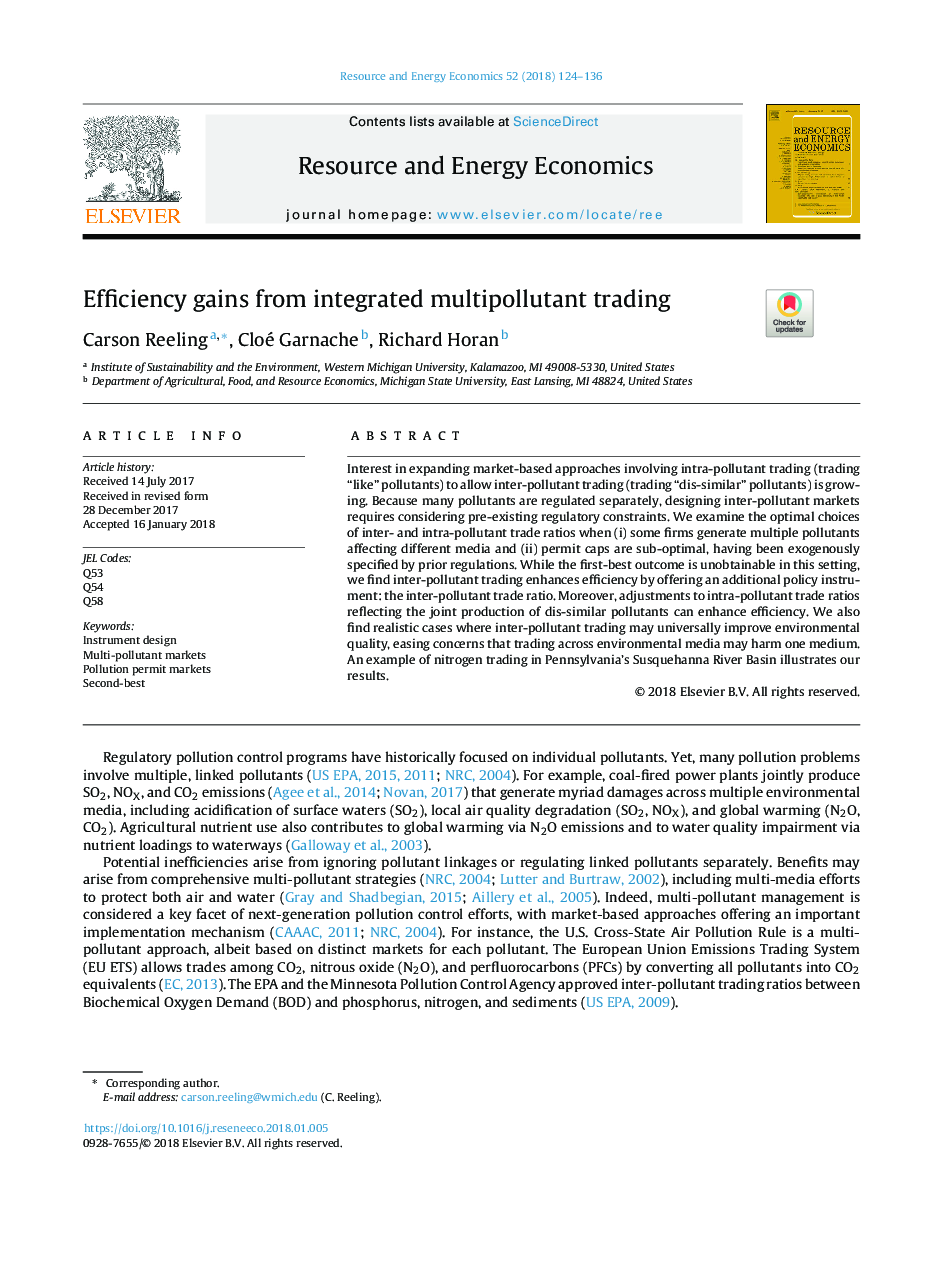| Article ID | Journal | Published Year | Pages | File Type |
|---|---|---|---|---|
| 7387440 | Resource and Energy Economics | 2018 | 13 Pages |
Abstract
Interest in expanding market-based approaches involving intra-pollutant trading (trading “like” pollutants) to allow inter-pollutant trading (trading “dis-similar” pollutants) is growing. Because many pollutants are regulated separately, designing inter-pollutant markets requires considering pre-existing regulatory constraints. We examine the optimal choices of inter- and intra-pollutant trade ratios when (i) some firms generate multiple pollutants affecting different media and (ii) permit caps are sub-optimal, having been exogenously specified by prior regulations. While the first-best outcome is unobtainable in this setting, we find inter-pollutant trading enhances efficiency by offering an additional policy instrument: the inter-pollutant trade ratio. Moreover, adjustments to intra-pollutant trade ratios reflecting the joint production of dis-similar pollutants can enhance efficiency. We also find realistic cases where inter-pollutant trading may universally improve environmental quality, easing concerns that trading across environmental media may harm one medium. An example of nitrogen trading in Pennsylvania's Susquehanna River Basin illustrates our results.
Related Topics
Physical Sciences and Engineering
Energy
Energy (General)
Authors
Carson Reeling, Cloé Garnache, Richard Horan,
